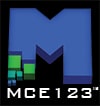This technology pertains to a telescope that would be used in space including the use of multi-pass light magnification, loop multi-pass optical magnification, high-frequency phased gathering of light through the same digital equipment, and the use of both multi-layered physical optics that can be calibrated to focus a very large area of telescopic focus into a very small area of light focus. Once the light is focused into the small area, a process of multi-pass pico-optical magnification is used at a high frequency to accelerate the light at a level that produces sensor data on a 4D and 5D level, such that the speed of the light exceeds the normal speed of light, and the sensor equipment records the light at multiple bands of light on a 3D level on the X and Y of each Z plane within the pico-crystal optical sensor, all of the Z sensors are calculated based on the phases of the light passing through the pico-crystal on a Z plane, and the 5D level is determined based on how the light reacts to combinations of data from multiple pico-crystal sensors that determine how the instance of each photon interacts with various types of sensing technology such as multiple bands of quantum-atomic lasers. This telescopic technology would have the capability to sense the matter that all of the light passes through on a 4D and 5D level over the entire timeframe of the light since its inception, such that the light can be sensed to determine what matter exists at the distance of the focus, the history of the focus, and all of the matter that exists, existed, has moved through the light at any point in time on the light path, and all of the matter that has obstructed the light over the timeframe. This technology would be ideal for a long-range sensor system on a spacecraft. This system uses pico-sensing technology, quantum-nuclear light filtration with pico-sensing technology, multi-generation pico-light duplication and pico-light routing technology, and active pico-optical computing technology.
MCE123 - Technology Development
MCE123℠ Intellectual Property Rights Management
MCE123℠ invents original concepts in our Technology Development department, such as for new high-tech technologies, which can be purchased ahead of time by other organizations to develop into physical products for a fee. Some of these concepts have already been physically developed by MCE123℠ Technology Development with our partners in the government, and are classified as national security technologies, in which we allow the government to develop the technologies as part of our company, and we own the technologies, since we invented them, and they were never purchased. We may not allow these technologies to be purchased by others, however the technologies must be purchased from our company if they are ever purchased from production, as they are our technologies. There are government policies and government legislation that prevents the technologies from being purchased without MCE123℠ Technology Development being paid for its works to invent the technologies as/for the government.
You must have our authorization to work on our products or services, ahead of time, in physical writing, regarding any invention you read about on our website. Please consult with the MCE123℠ Legal Department before using any concepts from us, as we spend countless hours developing these concepts from scratch, and you must pay us to use these concepts, or even modify the concepts and use the concepts, even with significant modification. All works that derive from our works, including extrapolations or derivatives, are our property if you do not follow due process by obtaining physically written permission from us ahead of time. You must purchase all intellectual property relating to a technology concept before you begin work on any of our products or services. Failure to do so will result in Intellectual Property lawsuits and cases from our attorneys to compensate our company for intellectual and monetary damages that we have incurred due to any third party developing, using, or misusing any of our products.
This Intellectual Property is owned by MCE123℠ Technology Development. By viewing this Intellectual Property, you agree to the rights of the IP holder established under the Intellectual Property Rights Management agreement. To use the Intellectual Property, you must first obtain an Intellectual Property license, and you must pay royalties for each product that is produced using the Intellectual Property license.
MCE123℠ Technology Usage Policy Disclaimer
MCE123℠ does not support experiments using animals or human beings, at all, and all trials pertaining to or using animals or human beings using technologies invented by MCE123℠ must be agreed to in a physically pre-written contract agreed to between MCE123℠, its attorneys, and each individual, a separately pre-written contract for each technology, a separately pre-written contract for each individual, with the terms of which can be modified in various ways to ensure the security of our staff and the public, and additionally of which each individual contract can be cancelled or audited at any time and at all times by any individual or legal staff in the public. Any usage of our technologies must also be paid for to MCE123℠, or there was no agreement and thus no contract to provide any products or services, not even for scientific experimentation and educational uses. Any unauthorized usage or utilization of our technologies will be filed under the misuse clause, to cease and desist all usage of our technologies by unauthorized persons or organizations.

















